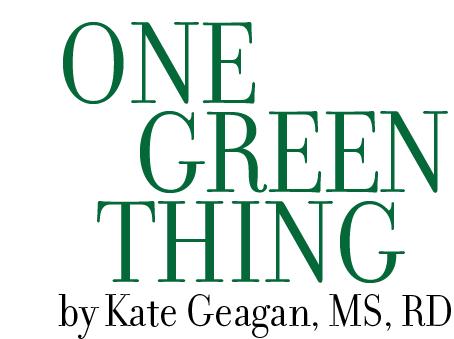More Organic Foods during pregnancy and in your grocery cart
While many a mom-to-be knows their grocery cart bestows key nutrients baby needs and influences flavors she will be exposed to while floating in amniotic fluid, “eating for two” continues to take on fresh meaning. A growing body of evidence suggests that a mother’s diet also plays a key role in helping protect her little one from exposure to potentially harmful chemicals, both in utero and then later via breast milk. That’s why you need to search out more organic foods during pregnancy.
Yet even without the fog of pregnancy brain, it can be maddening to decode the dozens of labels touting a variety of eco and health benefits. And if supermarkets seem more awash in them than ever, that’s because research suggests they do indeed sway consumers’ buying decisions. But which have strong science behind them when it comes to giving your baby the best (and safest) prenatal diet ever, and which ones can you ignore as marketing hype?
What To Look For: the USDA Certified Organic Seal
Of all the labels and logos vying for your attention, the USDA Certified Organic label is the most rigorous-and may be easier to remember because it actually swallows up many of the other claims in its wake (i.e. GMO free, no hormones or antibiotics, to name a few). Products labeled USDA Certified Organic are produced without the use of antibiotics, hormones, GMOs, sewage sludge, radiation, or toxic synthetic pesticides or fertilizers-and are 3rd party certified by an independent party.
Why is it a greener, cleaner, safer choice, especially at this critical time of growth and development for your baby? Not only do organic foods nudge your diet to a greener place by preserving the land, air and water quality for future generations, but 3 recently published studies in the journal Environmental Health Perspectives
found in-utero exposure to organophosphate insecticides (used in conventional agriculture) to be associated with a 4%-7% lower IQ by age 9[1].
While not an excuse to break out the cookies instead of a conventional apple in the name of “healthy eating”, these studies offer one more pointer that eating organically (to the extent that you can) may be one of the best things you can do for a healthy pregnancy. Organic foods are “clean eating” at it’s best in another way, too: they never contain any artificial flavors, colors, preservatives, trans fats, or high fructose corn syrup- letting you naturally purge some of those ingredients from your and your baby’s diet.
While they certainly sound better for baby, remember that claims such as “natural”, “green” “eco-friendly” and “sustainable” on food labels actually have no tightly regulated definition according to the Federal Trade Commission (which regulates marketing claims). Think of them instead, more as marketing tools, meant to pull at your heart strings and conscience. And it appears to be working: According to a report from Mintel, a majority of consumers mistakenly think “natural” has a more rigorous definition than “organic”, when in fact the opposite is true. For all the deets on other labels and what they mean, check out our favorite app below.
Organics on a Budget: Easier Than You Think!
Can you afford to add more organic foods to your diet? Most likely, yes. Even though you may already be reeling from the costs coming at you with a baby on the way (from cribs to college funds), before you assume you’ll have organic sticker shock, check out my blog 9 East Ways to Shop Organic on a Budget. http://kategeagan.com/2011/11/9-easy-tricks-to-buy-organic-on-a-budget/
. In my experience, trading up to an organic diet without growing your grocery bill comes down to two simple things: shopping smarter, and doing a bit more yourself in the kitchen.
Of course, the most important diet is one rich in prenatal power foods: fruits, vegetables, whole grains, lean proteins (including omega-3 rich seafood) and low-fat dairy are Nature’s prime building blocks for a healthy pregnancy. Thoroughly washing and peeling conventional produce can significantly reduce potential pesticide exposure, and shopping from the Environmental Working Group’s “Clean 15” http://www.ewg.org/foodnews/summary/ lets you enjoy the many health perks of a produce-rich diet during pregnancy while reducing your risk for pesticide exposure.
What about all the other logos and labels? Here’s our favorite app to help you easily stay in the know when it comes to which labels you can trust:
App:NRDC Label Look up
Cost: Free
Why We Love It: This simple, easy to use app lets you quickly look up exactly what claims like “Certified Humane, Non-GMO Verified, Fair Trade Certified, Animal Welfare Approved” and dozens more actually mean.
Or you can get it online:
http://www.nrdc.org/living/labels
What Do the Different Organic Claims Mean?
the USDA National Organic Program allows the following categories:
- “100% Organic”-made with 100 % organic ingredients
- “Organic”: made with at least 95% organic ingredients
- “Made with Organic Ingredients”: Contains a minimum of 70% organic ingredients, and clearly defined criteria on the remaining 30% (including no GMOs).
- Organic Ingredients: Products with less than 70% organic may list organic ingredients on the side panel, but may not make organic claims on the front of the package.
[1] Rauh, V., et al., ”7-Year Neurodevelopmental Scores and Prenatal Exposure to Chlorpyrifos, a Common Agricultural Insecticide,” Environmental Health Perspectives, online April 21, 2011
Bouchard, M.E., et al., ”Prenatal Exposure to OP Pesticides and IQ in 7-Year Old Children,” Environmental Health Perspectives, online April 21, 2011
Engel, S.M., et al., ”Prenatal Exposure to OPs, Paraoxonase 1, and Cognitive Development in Children,” Environmental Health Perspectives, online April 21, 2011
